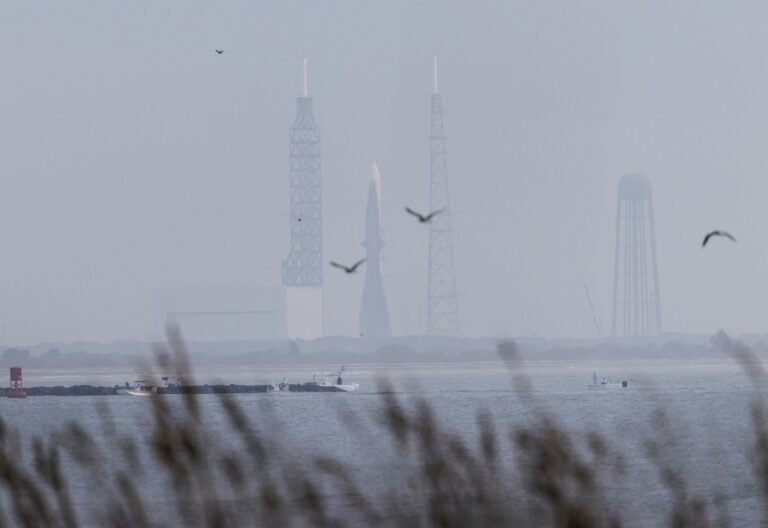
Controlled landing of Blue Origin’s New Glenn booster!
Miami, US, Nov 14 (EFE).- By Hugo Barcia
The controlled landing of Blue Origin’s New Glenn booster on an offshore platform, enabling future reusability, has brought Jeff Bezos’ company a significant step closer to rival SpaceX in the intensifying private space race.
The milestone came after Thursday’s launch of two NASA satellites bound for Mars, marking the first time a vehicle other than a SpaceX rocket has achieved a successful powered descent at sea.

Just 10 minutes after liftoff from Florida, New Glenn’s first stage touched down without issues on a barge stationed several hundred kilometers offshore.
Until now, only SpaceX’s Falcon 9, Falcon Heavy, and Starship boosters had completed controlled landings. Falcon 9 first achieved the feat in 2015, while Starship, currently the world’s most powerful rocket, landed successfully for the first time in 2024.
SpaceX has now landed Falcon 9 boosters 513 times and has also recovered its Super Heavy first stage, which splashed down successfully in Jun. 2024 and was caught by a launch-pad tower crane that October.

Thursday’s flight was the second launch of the 98-meter-tall New Glenn and the first in which its booster survived descent. The vehicle’s initial attempt, in January, ended with the first stage lost at sea.
Blue Origin says the booster is designed for a minimum of 25 reuses, which would significantly reduce costs and waste.
How New Glenn compares to SpaceX rockets
Standing 98 meters (321.5 feet) tall with a 7-meter (23-feet) diameter, New Glenn can carry more than 13 tons to geostationary transfer orbit (GTO) and 45 tons to low Earth orbit (LEO).

This positions it in the same category as SpaceX’s Falcon Heavy, which is 70 meters (approximately 230 feet) tall and can haul 63.8 tons to LEO and 26.7 tons to GTO.
Falcon 9, by comparison, lifts 8.3 tons to LEO and 22.8 tons to GTO, while Starship, towering at 123 meters (403.5 feet), can deliver between 100 and 150 tons to orbit.
New Glenn’s first stage uses seven engines and deploys six landing legs. Falcon Heavy relies on 27 Merlin engines, Falcon 9 on nine, and SpaceX’s Super Heavy booster on 33 engines.
Super Heavy does not use landing legs; instead, it can be captured by a tower-mounted mechanical arm. Starship’s upper stage has also completed successful splashdowns, marking progress toward full-system reusability.

Implications for the space race
SpaceX remains the undisputed leader in reusable rocketry after more than a decade of Falcon 9 landings and recent milestones with Starship.
But Blue Origin’s breakthrough narrows the gap at a moment when NASA is reconsidering its reliance on SpaceX.
In October, acting NASA administrator Sean Duffy publicly warned that SpaceX was falling behind China in the race to return to the Moon.
He announced that NASA would open to competition the 2021 contract that tasked SpaceX with providing the Artemis III lunar lander.

The decision could benefit Blue Origin, as well as firms such as Axiom and Boeing, which have carried out launches in recent years.
Duffy’s remarks came months after a public clash between Elon Musk and United States President Donald Trump, during which Trump threatened to terminate SpaceX’s Dragon capsule program.
New Glenn’s landing now positions Blue Origin as a far stronger contender in a rapidly shifting landscape, one in which NASA, geopolitical rivalry, and commercial competition are reshaping the future of space exploration. EFE

hbc/seo




